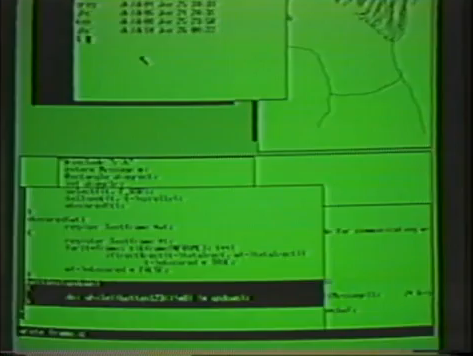In 1982, some clever computer scientists at Bell Labs developed an innovative graphical interface on top of their influential Unix operating system.
The Blit team developed a rather amusing (whether intentional or not) video explaining their research. The Blit terminal (yes, terminal. It hooked up to a larger minicomputer such as a Vax to download it graphics software), invented by Rob Pike (who also appears in the video) and Bart Locanthi, was a piece of genius, allowing Unix users to truly multitask, as this video from YouTube user VintageCG shows. (VintageCG’s channel also has some excellent classic videos of influential graphics demos, dating back to the 60s. It’s really worth checking out.)
Now users could play “Asteroids” while their code was compiling, in all its monochrome green screen glory.
The video goes into detail about how the mouse worked, which is rather amusing today, but bear in mind the few people who would have seen one in 1982 were computer scientists.
The Blit (which alternately stood for “Bell Labs Intelligent Terminal” or informally “Bacon, Lettuce, and Interactive Tomato”) was a prototype, but AT&T eventually commercialized it as the Teletype 5620. An interesting feature of the display is its portrait orientation rather than the usual landscape display we’re used to. The monitor is taller than it is wide.
Pike and Locanthi called it a “multiprogramming” terminal because it could show different layers. These layers, as this video shows, are mainly used for running command lines, with the occasional text editor or circuit plotting program thrown in.
If you watch a hardcore Linux or other Unix user today you’ll notice that the graphical setup isn’t too different from the Blit environment. True gurus usually have a bunch of shell windows open, and probably use a command-line based text editor like Vim or Emacs.
You might remember that Bell Labs invented the Unix operating system. Many Unix variants power many of the servers that host our shiny Web 2.0 services today, although you wouldn’t notice that the ideas that underlie the system date back to the late 60s.
Rob Pike works at Google these days. You can read his original paper on the Blit here.
You’ll probably also enjoy the Internet in 1998 and the classic early years of Google.
Every piece of technology you see today is probably much older than you think.











